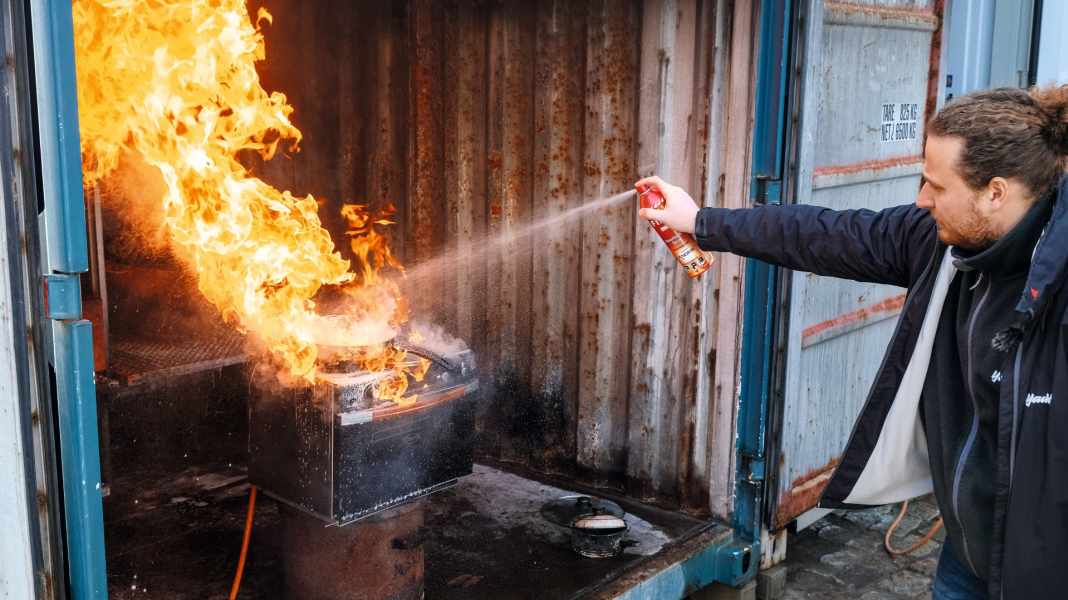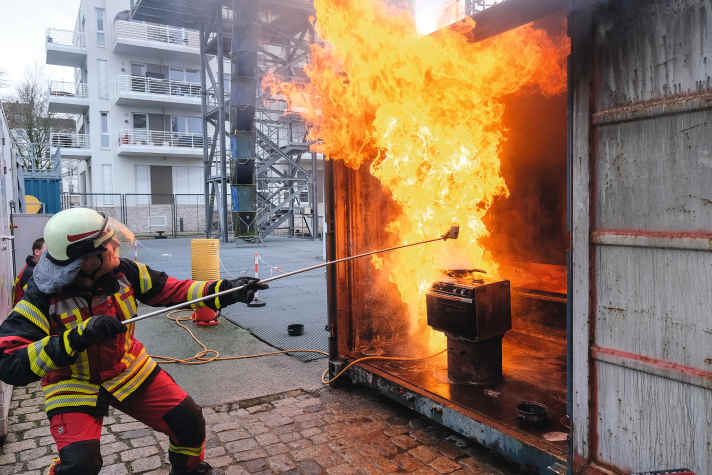
A lot is at stake when fighting a fire; the boat is quickly lost to fire and the crew is also in great danger. The only rescue at sea is then the dinghy or the inflatable island. Fire is already a serious danger on land, but it is even greater at sea. The four most common sources of fire on board are, in ascending order, candles, electrics, the propulsion engine in combination with fuel and, in first place, the galley.
The greatest fire hazard comes from the cooker. Grease fires can be particularly treacherous and devastating. This particular class of fire is so dangerous because it starts quickly if a pan of oil is left on the hob for a long time, the fat continues to flare up even if splashed or spilt, it spreads very quickly and can ignite greasy cupboard surfaces in the immediate vicinity, for example. However, the dreaded fat explosion poses a particular danger. This occurs when water is poured into burning fat - the liquid evaporates suddenly and spreads the burning fat along with the vapour. Water is therefore ruled out as an extinguishing agent, it is even forbidden because it accelerates the fire.

Nevertheless, there is also good news about grease fires: they are still quite small and controllable when they start. In the early stages, the flames barely flicker over the edge of the pan - no need to panic. Nevertheless, the situation is very serious. The hob should be switched off as quickly as possible. This is sufficient in the early stages of a fat fire; without heat, the flames will go out. However, there is no time to lose, because after just 30 seconds to a minute, the flames can rise so high that, firstly, the hob can no longer be reached safely and, secondly, the fire will supply itself with sufficient heat and will not extinguish on its own before the fat has completely burnt off. However, as cupboards, curtains and ceiling panelling can catch fire, it is not advisable to simply wait.
In this phase, experts speak of an incipient fire. If action is taken quickly, it is easy to extinguish, even for non-professionals. Even if it is no longer possible to turn off the hob, handy fire extinguishers can still bring the situation under control.
The compact fire extinguishing sprays are suitable here. Many are also explicitly recommended for grease fires. One advantage of the sprays is their small size: They can be stored directly in the pantry and are quickly to hand. They also work intuitively - like a can of hairspray or deodorant - so the inhibition threshold for using them is low. Another plus: the extinguishing agents do not cause a great deal of soiling and destruction like powder extinguishers. They can therefore be used without hesitation. These are weighty arguments in favour of the handy cans and an advantage over large powder or foam extinguishers. The extinguishing sprays are offered by many manufacturers. The test included examples from equipment suppliers, DIY stores and online shops for camping equipment, from ADAC and Kaufland.
All sprays had to extinguish a grease fire on a standard boat gas cooker. The results varied greatly, from quick extinguishing success to dangerously high jet flames and even failure of the extinguisher.
The test results can now be read in YACHT, issue 7/2022, available at DK-Shop. Or you can download the test via the link below.
